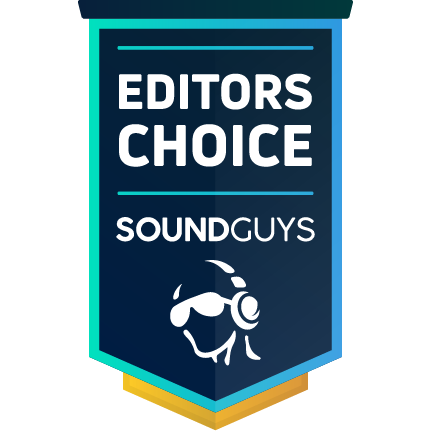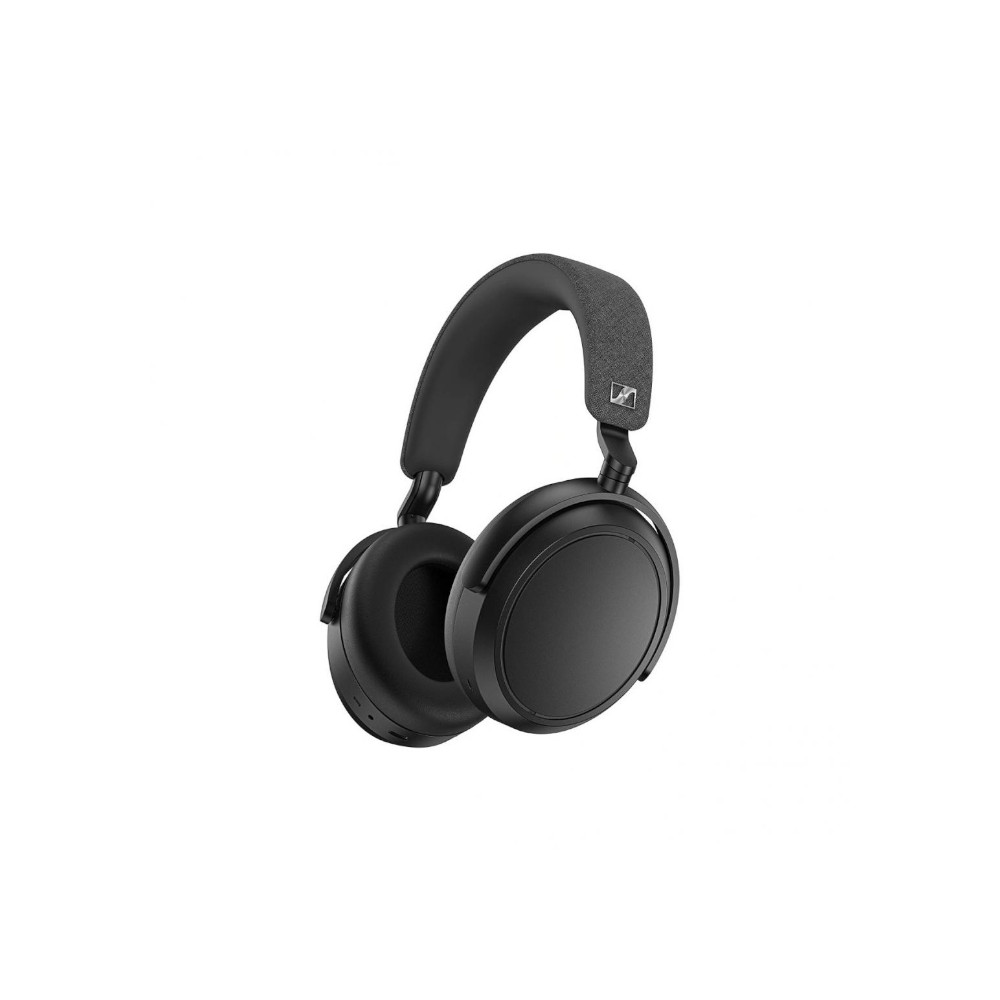All products featured are independently chosen by us. However, SoundGuys may receive a commission on orders placed through its retail links. See our ethics statement.
Best headphones for music
Published onJanuary 8, 2025







Just as you need the right tool for the job, finding the right headphones can make all the difference for your music listening. We’ve tested a wide range of options to bring you the best headphones for specific genres, as well as top wired and wireless picks that shine across the board. Our recommendations aren’t just based on personal preference — we’ve tested and recorded each headphone’s frequency response to back up our claims. Each option caters to the nuances of different musical styles, from the deep bass of hip-hop to the intricate layers of classical compositions. Obviously, no one headphone will work best for all songs of a genre, but there are some common features that can sometimes help or harm your experience.
Before we dive in, it’s worth noting that your listening environment and music source play a role, too. For instance, the audio quality type supported by your music streaming service can impact what you hear. Keep these factors in mind as we explore the headphones that could take your playlist to the next level.
Editor’s note: this list was published on January 8, 2025, to improve formatting and context.
Take SoundGuys’ quiz to find your best fit
Best wireless headphones for music
There are two wireless headphones we recommend for listening to music, no matter the genre.
Sony WH-1000XM5

The Sony WH-1000XM5 offers a consumer-friendly sound profile with strong bass and treble emphasis, though it has a somewhat recessed midrange. It supports SBC, AAC, and LDAC codecs, providing high-quality wireless audio options. The frequency response shows a boost in bass and highs, which may benefit from some equalization for a more balanced profile.
Loading chart ...
According to the Multi-Dimensional Audio Quality Score (MDAQS), the WH-1000XM5 rates well in audio quality, with good results across timbre, distortion, and immersiveness. The headphones do a decent job of presenting a stereo image and spatial audio.

The Sony Headphones Connect app provides a custom equalizer that allows you to adjust the sound profile to your liking. The app offers presets and allows you to create and save your own EQ settings. Notably, these EQ settings are saved directly to the headset, so they apply even when you’re not using the app. The app also includes a “Clear Bass” slider for additional low-end adjustment.


Sennheiser MOMENTUM 4 Wireless

The Sennheiser MOMENTUM 4 Wireless presents a sound signature that’s very close to our headphone preference curve. It supports a wide range of codecs, including SBC, AAC, aptX, aptX HD, and aptX Adaptive. The frequency response shows a slight bass boost without compromising the mids and highs, offering a well-balanced sound out of the box.
Loading chart ...
The MDAQS results for the MOMENTUM 4 are impressive, with particularly high scores in timbre and immersiveness. Sennheiser’s tuning excels in representing 3D space in stereo mixes, contributing to an engaging listening experience.

The Sennheiser Smart Control app includes an equalizer function that lets you tweak the sound. The app provides a simple 5-band EQ for quick adjustments, as well as a guided tuning process if you create a Sennheiser account. You can save custom EQ presets within the app for easy access to your preferred sound profiles.


Best headphones for music and gaming
When it comes to headphones that perform equally well for gaming and listening to music, we have both an open-back and a closed-back pick.
Drop + EPOS PC38X (Open-back option)

The PC38X offers a wide soundstage and good spatial depth, making it excellent for immersive gaming experiences. Its frequency response shows excellent mid-range accuracy, which is great for in-game dialogue and vocals in music. The open-back design contributes to a more natural sound and a better sense of spatial depth.
Loading chart ...
The frequency response closely follows the preference curve in the mids (100Hz to 3kHz), with a gentle roll-off in low frequencies below 100Hz. This results in clear dialogue and detailed instrument reproduction, though it may lack some sub-bass emphasis. Unfortunately, the PC38X doesn’t come with a companion software for EQ customization.

Audeze Maxwell (Closed-back option)

The Maxwell offers impressive audio quality with its large 90mm planar magnetic drivers. It’s designed to excel in both gaming and music listening. It supports a wide range of connection options, including Bluetooth with LDAC, SBC, and AAC codecs, as well as wired USB-C and 3.5mm connections.
Loading chart ...
Out of the box, it strongly emphasizes frequencies between 3-6kHz, which is great for atmospheric sounds and string attacks. However, it underemphasizes frequencies above 6kHz and in the bass range. The Audeze HQ app provides several EQ presets and the ability to create custom EQ settings. This is particularly useful for switching between gaming and music listening modes. The “Audeze EQ” preset, for example, provides a more consumer-friendly sound that closely follows our preference curve.
Best headphones for classical music

The Sennheiser HD 800 S are excellent yet expensive headphones revered for their brilliant clarity and spacious soundstage. Its relatively flat response in the crucial midrange (300Hz to 4kHz) accurately reproduces the core frequencies of most orchestral instruments, including strings, brass, and woodwinds. The slight emphasis in the upper midrange enhances the clarity and presence of these instruments without becoming harsh. While there’s a subtle roll-off in the sub-bass, this actually benefits classical recordings by preventing low-end muddiness and allowing clearer articulation of bass instruments.
Loading chart ...
The headphones’ ability to faithfully reproduce frequencies from as low as 27Hz (lowest piano notes) to well above 4kHz ensures that the full range of orchestral timbres is captured. You can easily discern individual instruments and appreciate the nuances of classical compositions. The slight treble emphasis can bring out the air and sparkle in string sections and percussion, adding to the sense of realism in orchestral recordings.

Best headphones for heavy metal

True to their name, the Heavys H1H are an excellent choice for heavy metal enthusiasts. These headphones are specifically designed to cater to the unique demands of heavy music, featuring a distinctive 8-driver design (four per ear cup) that delivers a powerful and immersive listening experience. The frequency response is well-suited for metal, offering punchy bass for kick drums, crisp mids for distorted guitars, and clear highs for cymbals and vocals. The Heavys H1H excels in reproducing the full dynamic range of metal, from crushing low-end to sharp, cutting highs.
Loading chart ...
The headphones’ sound quality shines across various metal subgenres, handling everything from progressive metal’s complex arrangements to the raw intensity of death metal. The large, comfortable ear cups provide excellent isolation, enhancing the listening experience. With both wired and wireless connectivity options, including support for high-quality codecs like aptX Adaptive, these headphones offer versatility for different listening setups. While they may be overkill for casual listening, for dedicated metal fans looking to appreciate every nuance of their favorite tracks, the Heavys H1H offers a tailored listening experience that truly rocks.


Best wired headphones for music
Here are a couple of our favorite wired headphones for any music genre, depending on your budget.
High-end option: HiFiMan Sundara

The HiFiMan Sundara offers exceptional sound quality with a frequency response that closely follows the studio curve. Its planar magnetic drivers provide excellent dynamic accuracy and low distortion, making it suitable for a wide range of music genres. The Sundara excels in reproducing impulsive sounds and offers great consistency across different volume levels.
Loading chart ...
Its open-back design contributes to a natural soundstage, beneficial for genres like classical and jazz. While it has a slight roll-off in the sub-bass, this can be addressed with equalization if desired. At $299 (reduced from its original $499), it represents great value in the high-end segment.

Budget option: AKG K371

The AKG K371 are best-in-class at reproducing a broad list of music genres, including heavy metal, rap, and acoustic. Its frequency response closely follows the headphone preference curve, making it versatile for various music genres. The K371 offers a slight bass emphasis below 80Hz, which adds depth without overpowering the mids and highs.
Loading chart ...
Its closed-back design provides better isolation than the Sundara, making it more suitable for use in noisier environments. The K371 performs well across different music styles, from heavy metal to acoustic, offering clear vocals and good instrument separation. Its comfort and portability also make it a practical choice for everyday use.

Both options offer excellent sound quality for their respective price ranges and can handle a variety of music genres effectively. The choice between them would depend on the listener’s budget, preference for open or closed-back design, and specific listening environment.
The best headphones for other music genres

- Best headphones for rock music: The Sennheiser HD 660S ($349 at Amazon) and updated HD 660S2 ($499 at Amazon) are excellent picks for guitar music fans. The former features an incredibly natural and even midrange between 100Hz — 1kHz that closely follows our preference curve. The headphones have a gentle roll-off in the bass below 100Hz that may cause some super-low-end sounds to appear a little subdued. However, since most instruments’ fundamental frequencies reside within the 500Hz — 2kHz range, this should not pose a problem.
- Best headphones for EDM: The Sony WH-1000XM5 and Sennheiser MOMENTUM 4 Wireless have loud bass and sub-bass reproduction that is best suited for listening to EDM and metal.
- Best headphones for hip-hop: The Audio-Technica ATH-M50x ($169 at Amazon) handle pop and hip-hop particularly well. These cans have a flat bass and sub-bass curve between 40 — 300Hz, allowing users to hear the accentuated bass response of most pop and hip-hop tracks without creating distortion. Granted, the slight under-emphasis between 300 — 400Hz may cause kick drums and bass guitars to lack “oomph.” Likewise, sub-bass frequencies below 40Hz taper off by roughly 10 dB.
- An alternative worthy of consideration is the Beyerdynamic DT 770 PRO (80Ω) ($169 at Amazon.) These have a flatter response at around 300Hz, which may cause kicks and bass guitars to be more prominent in the mix.
- Best headphones for jazz: In addition to the Sennheiser HD 800 S, the Sennheiser HD 660S2 ($499 at Amazon) has a spacious soundstage for less cost. For the best in the business, the Focal Utopia ($1149 at Amazon) has an excellent and unique soundstage.
What you should know about headphones and music

Most importantly, you should know that how good a song sounds through your headphones can vary quite a lot. In fact, in one of the studies that validated our Preference Curve, the ratings for a single tuning had enormous levels of variance among the same respondents — the same people would rate the same tunings quite differently from song to song. This occurred even within the same genres.
Frequency response

Frequency response refers to how headphones reproduce different sound frequencies. Different music genres emphasize various frequency ranges. For example, EDM and hip-hop often have strong bass (20-250 Hz), while classical music relies more on mids (250-2000 Hz) and highs (2000-20000 Hz). A balanced frequency response is generally desirable, but some genres benefit from slight emphasis in certain ranges.
Spectral analysis of different music genres
Various music genres have distinct spectral profiles. EDM and pop often have strong sub-bass and bass. Classical and jazz tend to emphasize the midrange, with less pronounced bass. Rock and metal often emphasize the mids and highs. Understanding these differences can help you choose headphones that complement your preferred genres.
Isolation and Active Noise Cancellation (ANC)
Isolation refers to how well headphones physically block external noise. ANC uses technology to counteract ambient sounds. Both are important for enjoying music in noisy environments. Closed-back headphones typically offer better isolation, while open-back designs provide a more spacious soundstage at the cost of less isolation.
Open-back vs. Closed-back designs
Open-back headphones allow air to flow through the ear cups, often resulting in a more natural, spacious sound ideal for genres like classical and jazz. Closed-back designs offer better isolation and typically have a stronger bass response, suiting genres like EDM and hip-hop.
Soundstage and imaging
Soundstage refers to the perceived space in which sounds are located. Imaging is how accurately these sounds are positioned within that space. Both are crucial for genres with complex instrumentation, like classical music or well-produced rock albums.
Driver types
Different driver types (dynamic, planar magnetic, electrostatic) have various strengths. Dynamic drivers are common and versatile. Planar magnetic drivers often offer better detail and faster response, beneficial for genres with complex arrangements. Electrostatic drivers are known for exceptional clarity but are typically more expensive.
Impedance and sensitivity
These factors affect how easily headphones are driven by different sources. High-impedance headphones often require dedicated amplifiers, while low-impedance ones are more suitable for portable devices. This can impact your listening setup and the overall sound quality you experience.
How we test headphones

At SoundGuys, we employ a rigorous, standardized testing process for all headphone reviews. Our objective measurements use industry-standard equipment, including a Bruel & Kjaer 5128 head simulator, to assess frequency response, isolation, and noise cancelation performance. We also conduct extensive subjective testing, evaluating comfort, build quality, and real-world performance across various music genres and listening environments.
To provide a more comprehensive understanding of sound quality, we utilize Multi-Dimensional Audio Quality Scores (MDAQS), which simulate how a panel of listeners would rate various aspects of audio performance. This combination of objective data and subjective analysis ensures our reviews offer a well-rounded perspective on each product’s strengths and weaknesses. For a more detailed explanation of our testing procedures, please visit our How We Test page.
How we choose the best headphones for music
When selecting the best headphones for music, we consider several factors:
- Sound quality: We prioritize headphones that offer a balanced, accurate frequency response suitable for various music genres.
- Comfort: Long listening sessions require comfortable headphones, so we pay attention to factors like weight, padding, and clamping force.
- Build quality: Durability is essential for long-term use, so we consider the materials and construction of each pair.
- Features: We evaluate additional features like noise cancelation, battery life (for wireless models), and codec support.
- Value: We compare the price to the overall performance and features to ensure our recommendations offer good value for money.
Our selections aim to cater to different needs, preferences, and budgets while maintaining high standards for audio quality and user experience.
Why you should trust SoundGuys

At SoundGuys, we pride ourselves on our commitment to unbiased, thorough, and ethical reporting in the audio industry. Our team consists of experienced journalists and audio enthusiasts who adhere to strict standards:
- We maintain complete independence from manufacturers and advertisers, never accepting payment for positive coverage or reviews.
- Our writers are compensated solely for content creation, with no influence from advertising efforts.
- We primarily generate revenue through referral programs, not direct advertising, ensuring our recommendations are based on product merit.
- When we receive review units, they are always returned or given away, never kept by our staff.
- We correct any factual inaccuracies promptly and transparently.
- Our testing methodology is standardized and rigorous, combining objective measurements with real-world usage.
By upholding these principles, we strive to provide you with the most reliable and informative content to guide your audio purchase decisions. For more details on our ethics policy, please visit our Ethics page.
Frequently asked questions
There isn’t a single “best” brand, as different brands excel in various aspects. Some renowned brands include Sony, Sennheiser, Bose, and Beyerdynamic.
Many musicians use studio-grade headphones like the Beyerdynamic DT 770 Pro, Sony MDR-7506, or Sennheiser HD 600 series for recording and mixing.
For true wireless earbuds, the Sony WF-1000XM5 and Apple AirPods Pro (2nd gen) are top choices. For wired in-ears, consider models from Shure or Etymotic.
This depends on personal preference. Headphones often provide better sound quality and comfort for extended use, while earphones are more portable and convenient.
Yes, as long as you maintain a safe volume level and take regular breaks to rest your ears.
Keep the volume at a moderate level, take regular breaks, and limit listening time to protect your hearing.
Over-ear headphones generally put less pressure on the ear canal compared to in-ear models, but any type can be safe if used properly.
